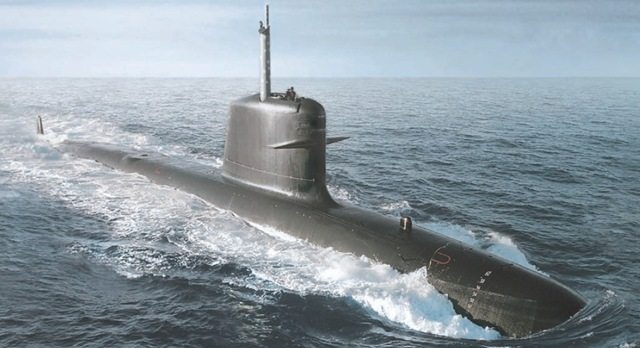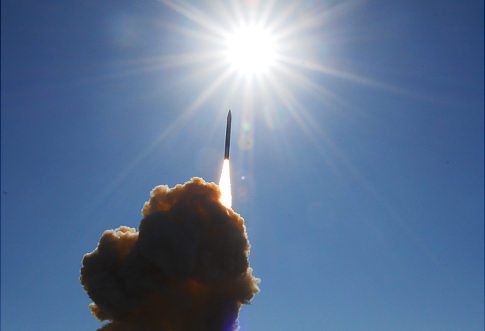France: Yesterday at its Cherbourg centre DCNS started the last joining of sections of the first Scorpene submarine for Brazil. The welding of sections 3 and 4, a key step for assembling the forward part of the submarine, is a strong symbol in terms of technology transfer.
Yesterday morning in Cherbourg, the 12 welders of the French-Brazilian team started the final operations for joining the sections of the first Scorpène for Brazil. The next assembly operations will be carried out in Brazil. Four days will be needed for this operation, consisting in assembling the rings forming the forward part of the submarine by welding.
The resulting assembly, around 6 metres in diameter, 24 metres long and weighing 200 tons, will subsequently accommodate systems including the operations centre, the torpedoes and the platform utilities (water, gas, electricity, etc.). During the first half of 2012 the tanks and large structures will be added to this hull, as well as the bridge fin, the ballast tanks, the access trunk and the fresh air induction cupola.
As part of the technology transfer, the Brazilian welders have received three months of training so that they could obtain the required qualifications. The contract covers the design and construction of four conventional submarines with technology transfer. The Cherbourg centre is currently host to 36 Brazilian trainees, bringing the number of trainees to 115 since the beginning of the contract.
Bernard Planchais stated: “This step is another successful milestone in the completion of this ambitious programme. It demonstrates the capacity of DCNS to implement a partnership that is both human and technological at the service of an international navy.”
The contract for Brazil also covers assistance with the design and construction of the non-nuclear part of the first Brazilian nuclear-powered submarine and support for the construction of a naval base and a shipyard. The first of the four conventional submarines is scheduled to enter active service in 2017. They have a conventional diesel-electric propulsion system. With a length of about 75 metres, their surface displacement is close to 2,000 tons. They are operated by a crew of 30 to 45 persons.
The four conventional submarines meet the particular specifications of the Brazilian Navy. They are optimally configured for the needs of protection and defence of the 8,500 kilometres of the Brazilian coast. They are multi-purpose ocean-going submarines designed for all types of mission, including combat against surface ships, anti-submarine warfare, deep-penetration strikes, special operations and intelligence gathering.
DCNS is a world leader in naval defence and an innovative player in energy. The Group’s success as an advanced technology company with global reach is built on meeting customer needs by deploying exceptional know-how and unique industrial resources. DCNS designs, builds and supports surface combatants, submarines and mission-critical systems and equipment incorporating the most advanced technologies. The Group employs 12,500 people and generates annual revenues of around EUR 2.5 billion.











